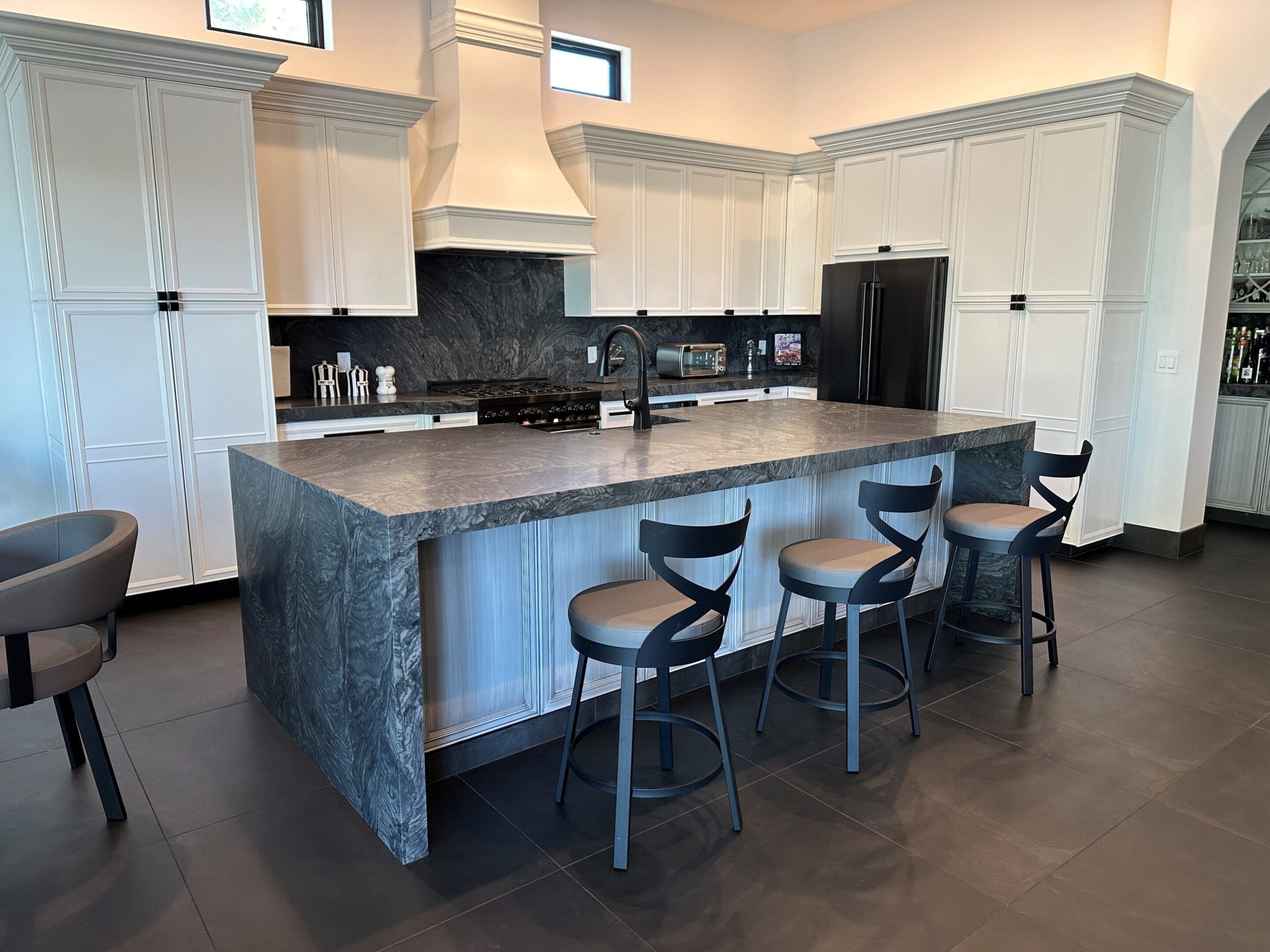
Benefits of Natural Stone
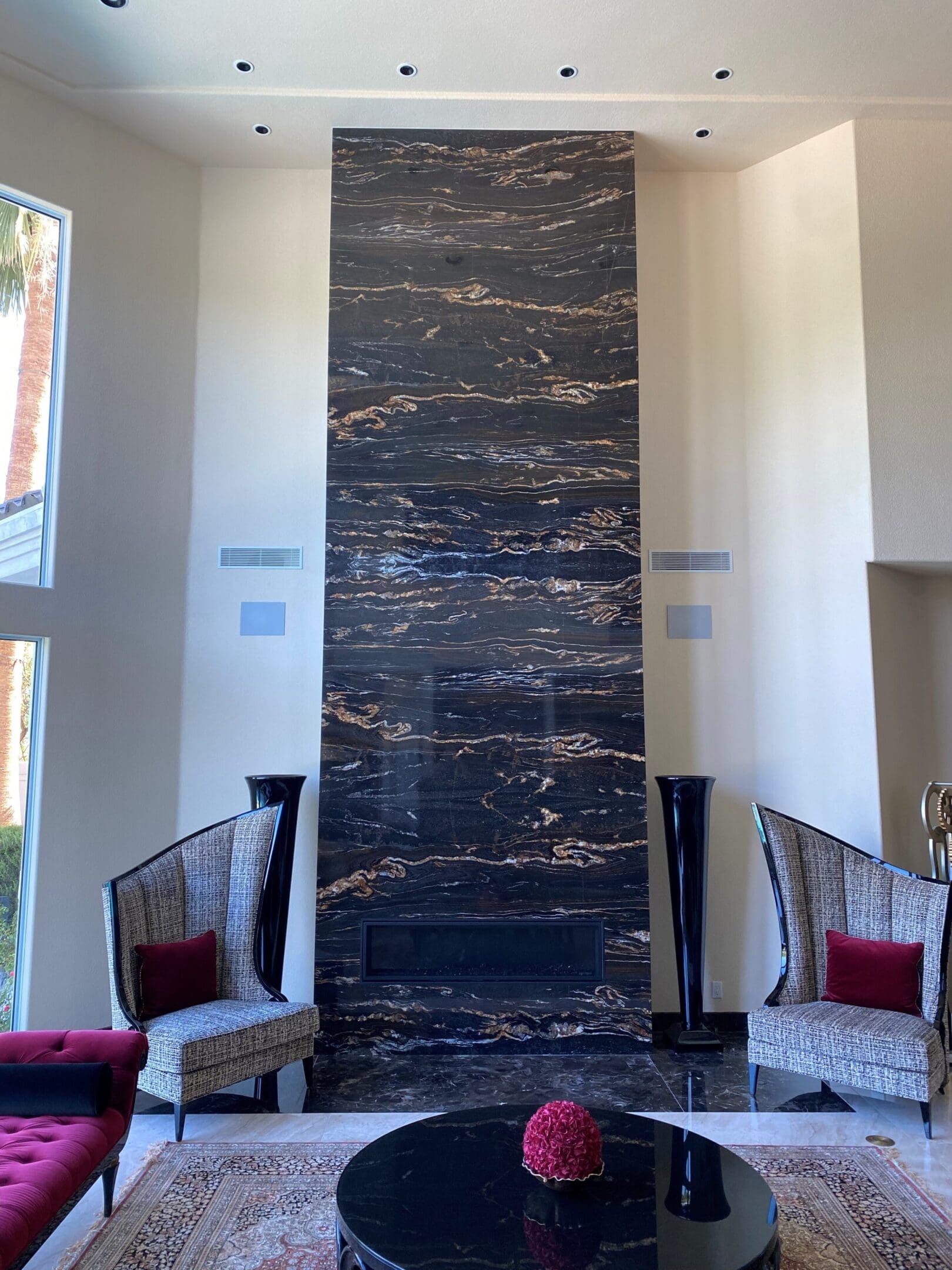
Finish Options

Benefits of Natural Stone

Finish Options
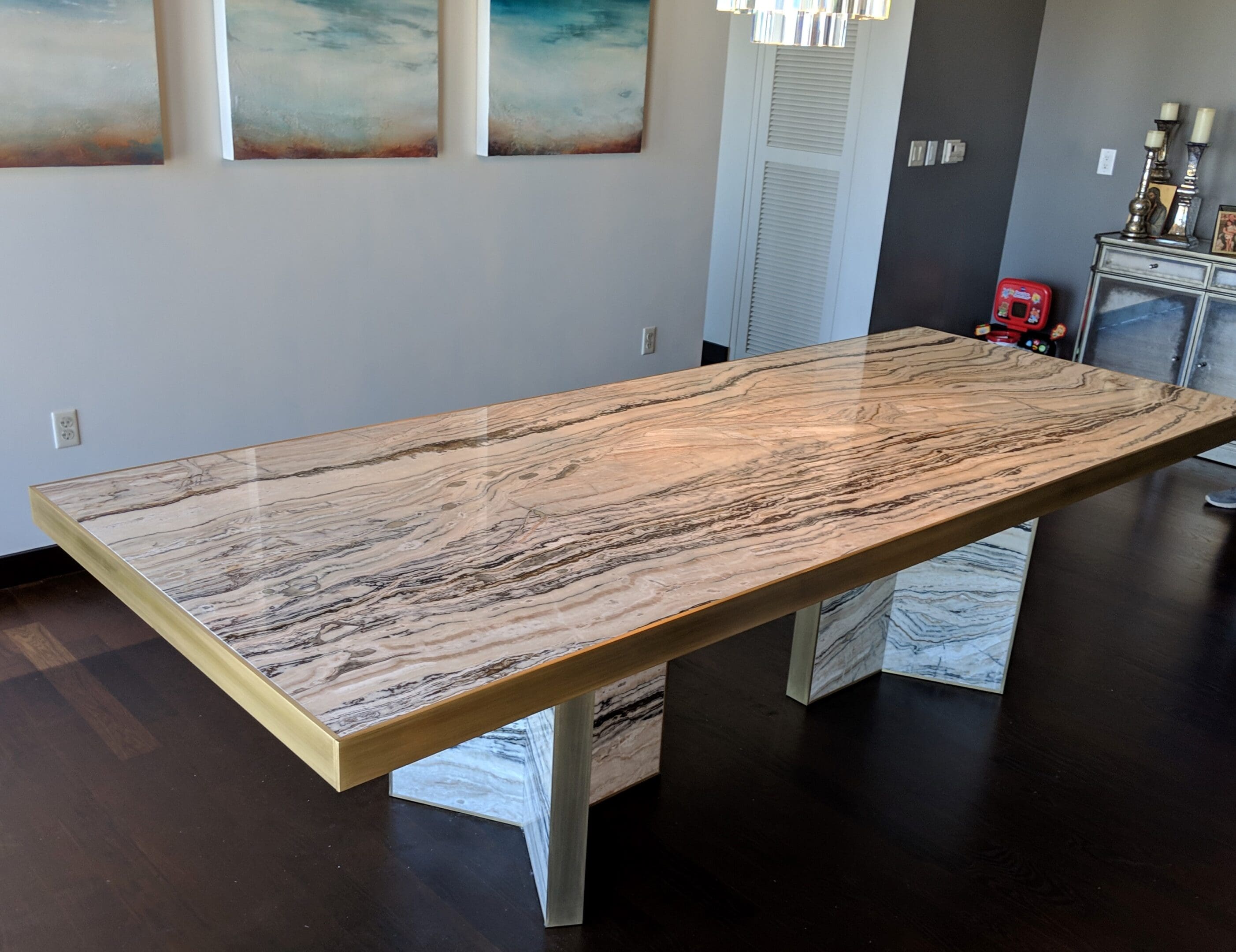
Characteristics of Natural Stone
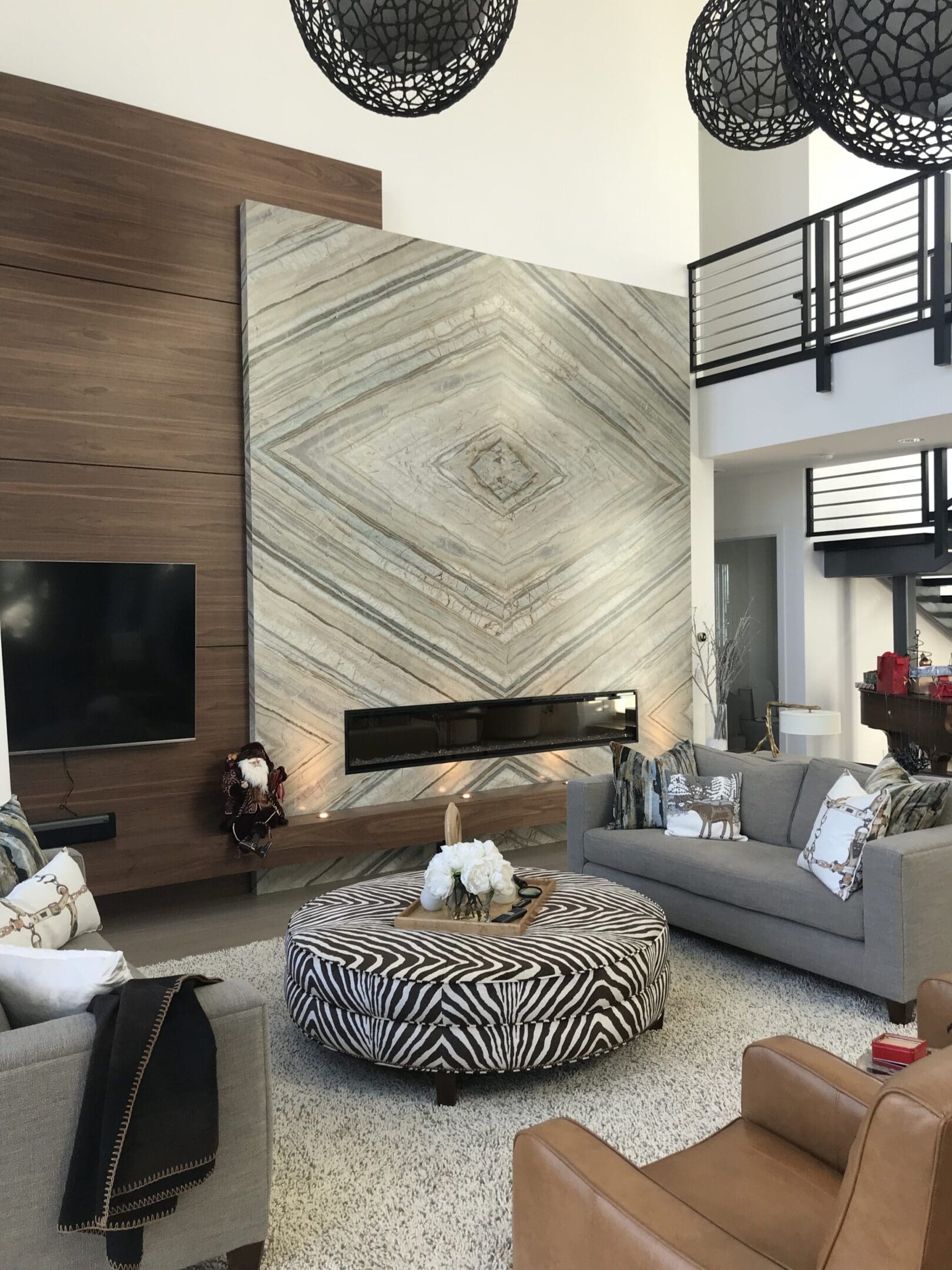
Seams
Seams in natural stone countertops are filled with a color-matching adhesive, which is visible and palpable upon inspection. Their prominence is more pronounced in materials with texture and movement. While English Marble & Granite considers all desired seam locations, the final placement is at our discretion, based on factors such as slab size, layout, material characteristics, installation requirements, and safety considerations.
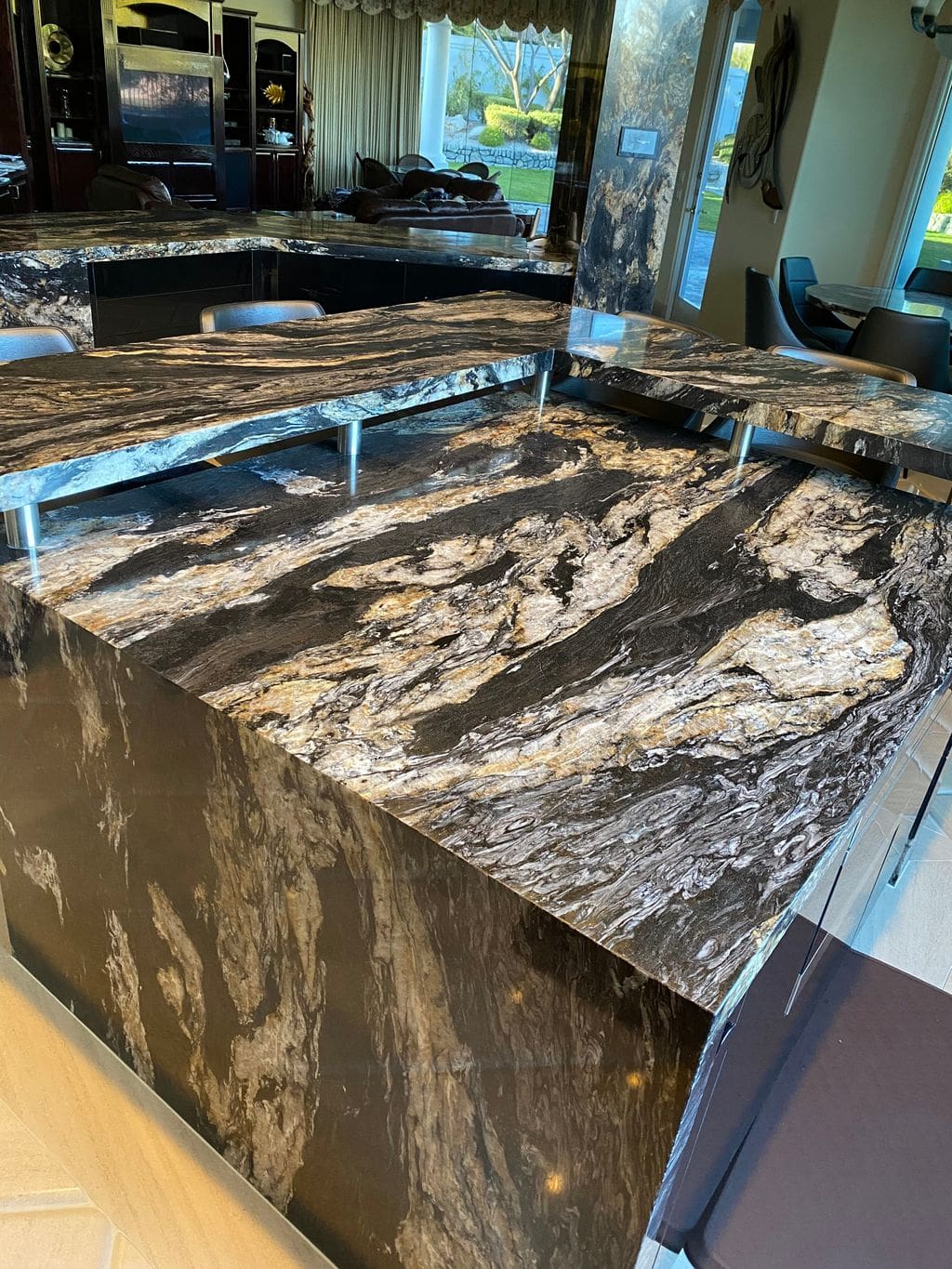
Support
The maximum unsupported overhang for a 3CM Natural Stone product is 10" and 6" for a 2CM product as long as 2/3 of the countertop is supported by a solid affixed structure (e.g. cabinets, walls, etc.). Additional support or brackets are required in other situations for safety concerns. Bracket supports should be placed 6" from each end, spaced up to 30" apart and extend 3"-6" from the edge.
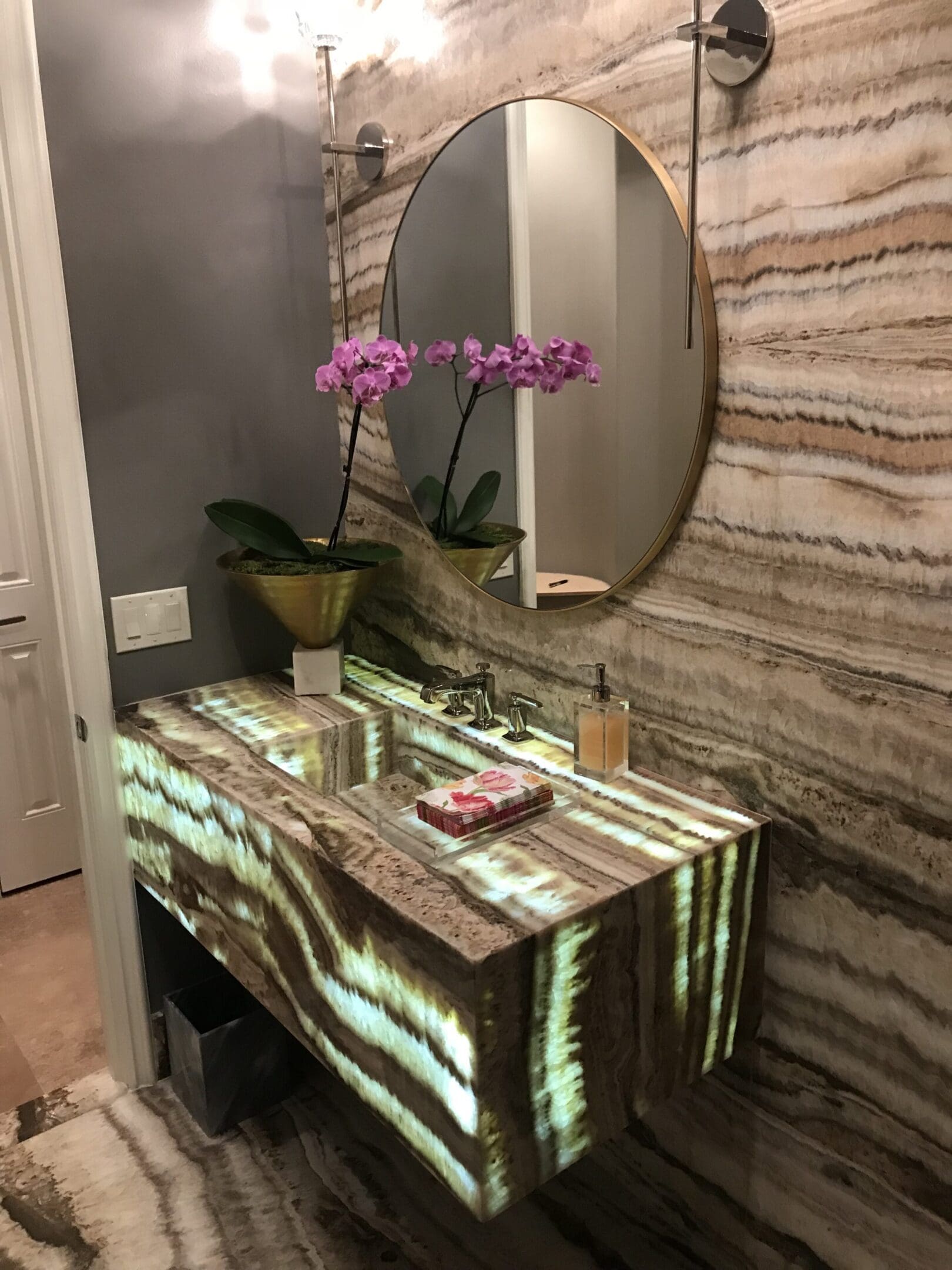
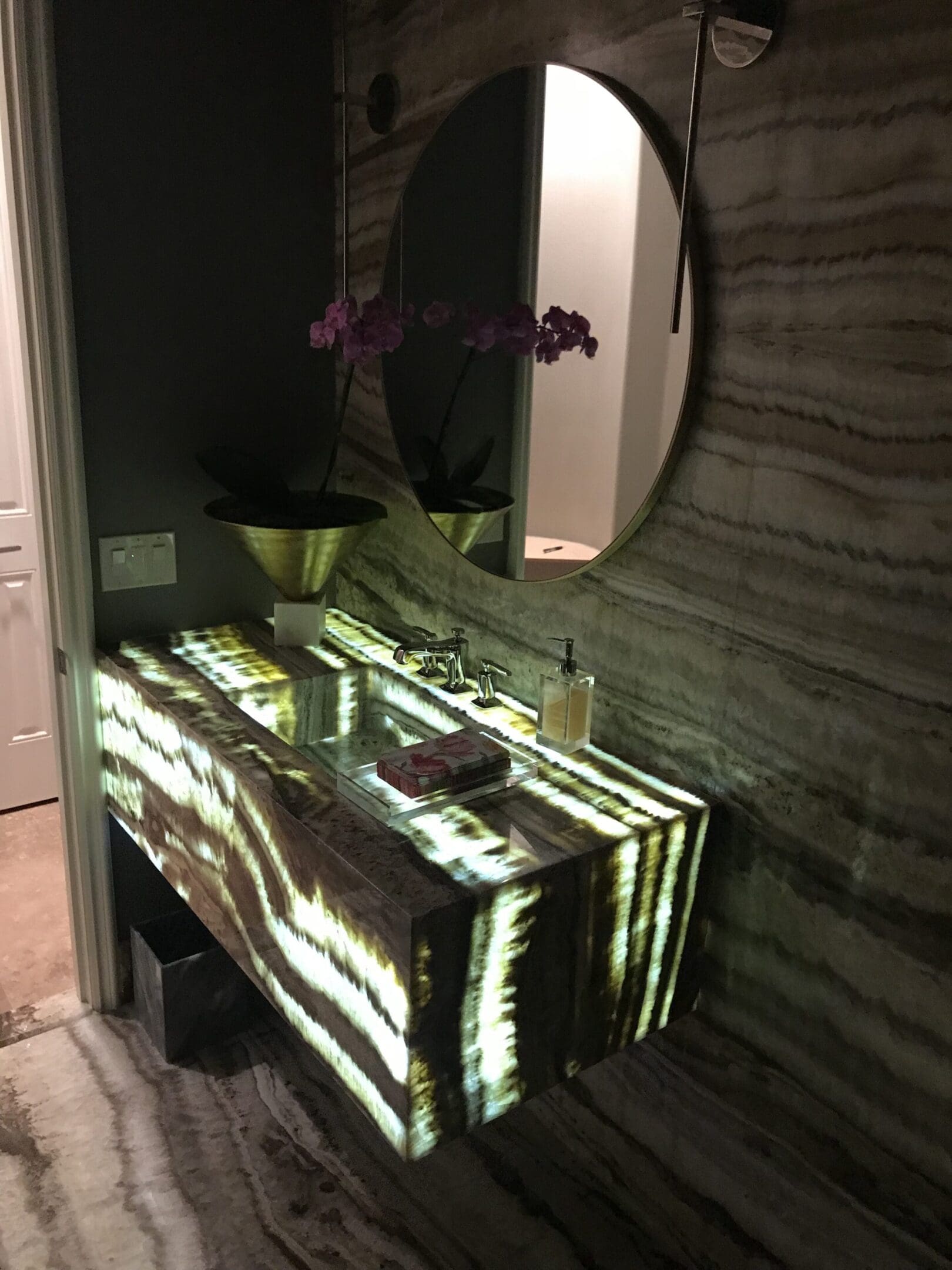
Care
Natural stones, being products of the earth, require gentle care to maintain their beauty. Avoid harsh cleaners or abrasives containing lemon juice or citrus, as these can etch and dull the finish. For daily cleaning, use a soft cloth with mild liquid soap and warm water. To remove soap scum, utilize a non-acidic soap scum remover. Promptly wiping up spills is crucial to prevent staining. Darker-colored and non-polished materials necessitate more frequent cleaning, as they tend to show dirt, dust, and marks more visibly than lighter patterns. Protect your surface from heat damage, scratches, and staining by using hot pads, trivets, cutting boards, placemats, and coasters.

Seams
Seams in natural stone countertops are filled with a color-matching adhesive, which is visible and palpable upon inspection. Their prominence is more pronounced in materials with texture and movement. While English Marble & Granite considers all desired seam locations, the final placement is at our discretion, based on factors such as slab size, layout, material characteristics, installation requirements, and safety considerations.

Support
The maximum unsupported overhang for a 3CM Natural Stone product is 10" and 6" for a 2CM product as long as 2/3 of the countertop is supported by a solid affixed structure (e.g. cabinets, walls, etc.). Additional support or brackets are required in other situations for safety concerns. Bracket supports should be placed 6" from each end, spaced up to 30" apart and extend 3"-6" from the edge.


Care
Natural stones, being products of the earth, require gentle care to maintain their beauty. Avoid harsh cleaners or abrasives containing lemon juice or citrus, as these can etch and dull the finish. For daily cleaning, use a soft cloth with mild liquid soap and warm water. To remove soap scum, utilize a non-acidic soap scum remover. Promptly wiping up spills is crucial to prevent staining. Darker-colored and non-polished materials necessitate more frequent cleaning, as they tend to show dirt, dust, and marks more visibly than lighter patterns. Protect your surface from heat damage, scratches, and staining by using hot pads, trivets, cutting boards, placemats, and coasters.

